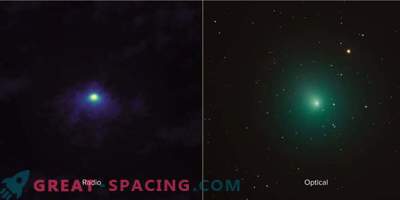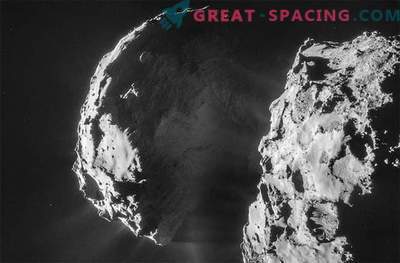
Astronomers using ALMA found complex organic molecules around the young star V883 Ori (in the constellation Orion). A sudden flash released molecules from icy compounds into the planet-forming disk. The chemical composition of the disk converges with comets in the modern solar system. The sensitivity of ALMA allows scientists to reconstruct the evolution of organic molecules from the moment of the birth of our system to the objects observed today.
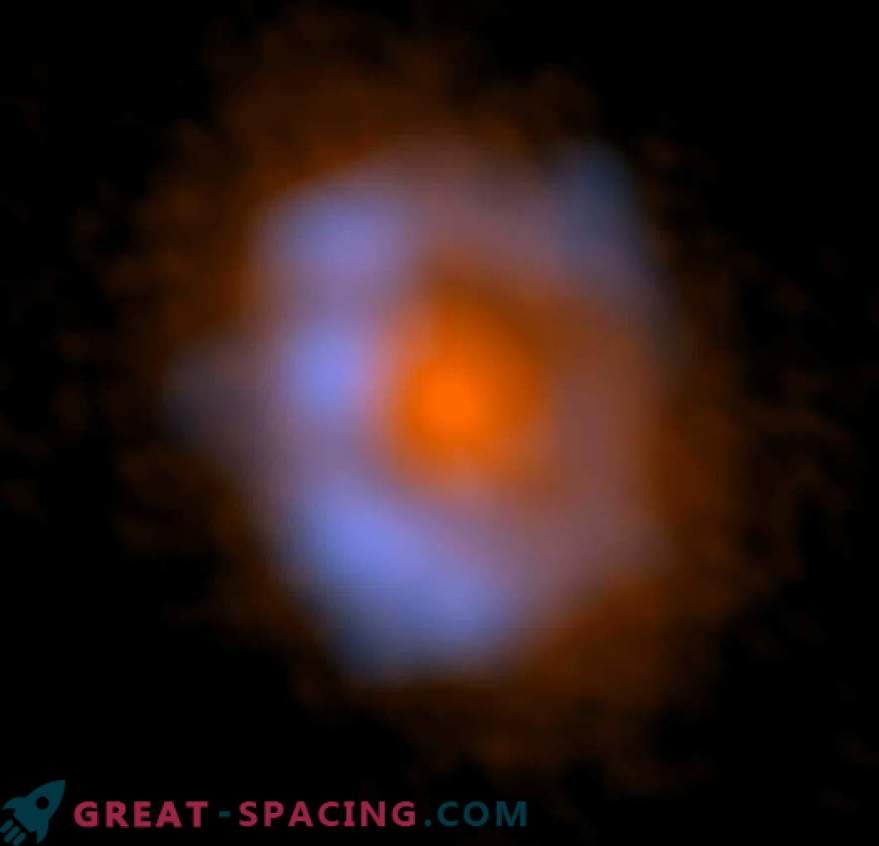
Orange indicates dust distribution, and blue indicates methanol (organic molecule)
The ALMA submillimeter array helped detect complex organic molecules, including methanol (CH3OH), acetone (CH3COCH3), acetaldehyde (CH3CHO), methyl formate (CH3OCHO), and acetonitrile (CH3CN). And this is the first time, when it was definitely possible to fix acetone in a protoplanetary disk (a region of planetary formation).
Various molecules are frozen in ice around dust particles in protoplanetary disks. An unexpected flash in the star V883 Ori heats the disk, sublimating the ice and releasing the molecules into gas. The territory in the disk, where the temperature reaches the rate of sublimation, is called the snow line. Typically, the radii of such lines cover several astronomical units, but they increase almost 10 times around the flashing stars.
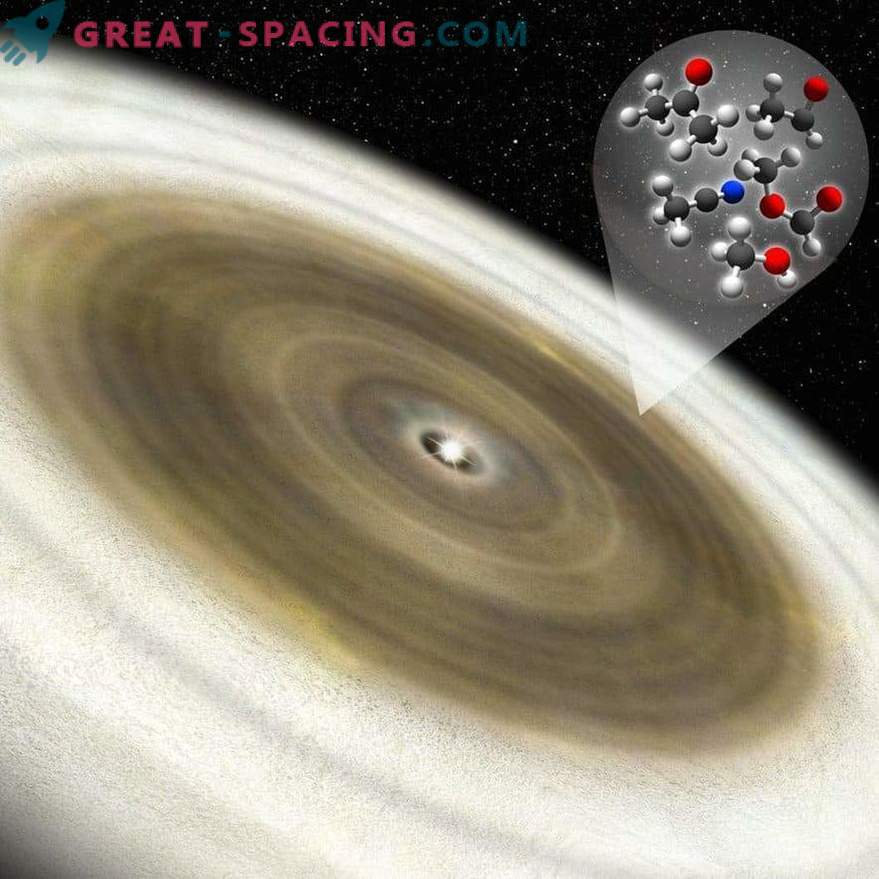
The outer part of the disk is cold and the dust particles are covered with ice. ALMA managed to find a variety of complex organic molecules around a snow line of water in a disk.
It is believed that ice together with frozen organic molecules may be closely related to the origin of life on the planets. In the solar system, the focus is on comets because of the richness of ice compounds. For example, the Rosetta mission managed to find rich organic chemistry around comet 67P / Churyumov-Gerasimenko.
Scientists believe that comets have formed in the outer and cooler region of the proto-solar system, where the molecules were located in the ice. Therefore, the study of the chemical composition of protoplanetary disks is directly related to the study of the origin of organic molecules and the building blocks of life.
Due to the sharpness of the ALMA gaze and the increased snow line (due to the stellar flare), it was possible to derive the spatial distribution of methanol and acetaldehyde. Their distribution resembles a ring structure with a radius of 60 a. e., which is twice the orbit of Neptune. There is an assumption that inside this ring molecules appear invisible, as they are hidden by a dense dust wall and frozen.
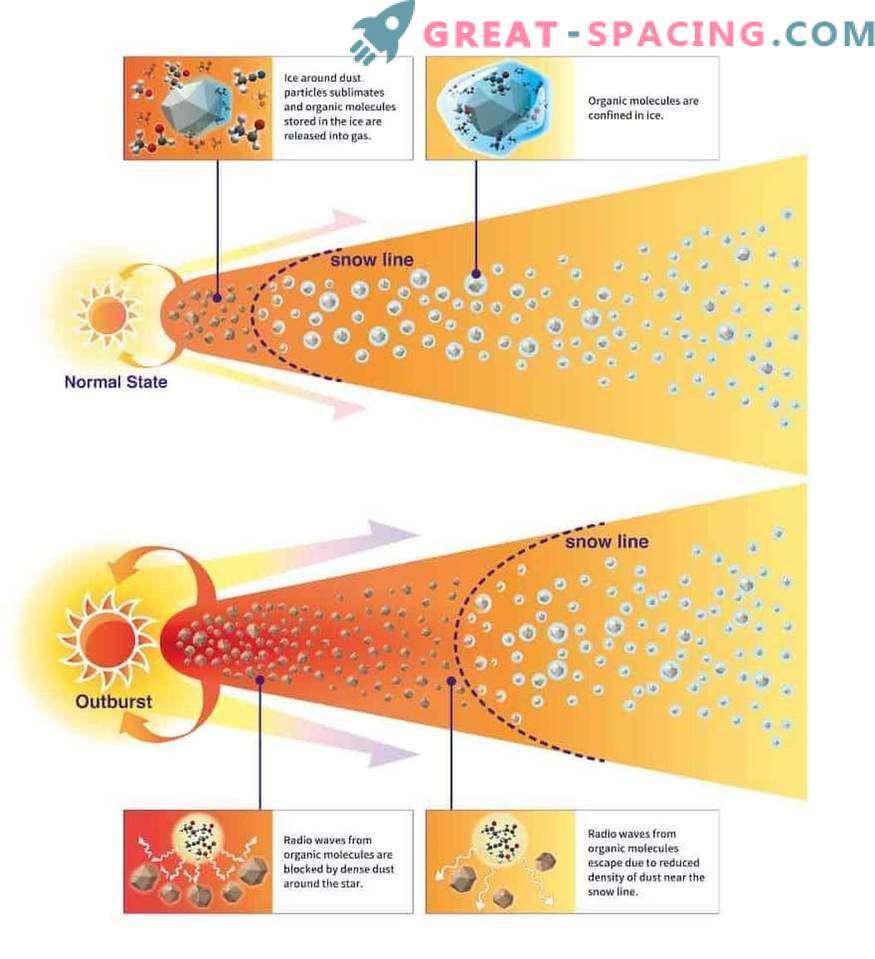
Schematic representation of the composition of protoplanetary disks in the normal state and in the ejection phase. V883 Ori passes through the flash, and the increase in temperature heating of the disk pushes the snow line out. Therefore, molecules in ice are released into the gas.
V883 Ori is a young star living in the constellation Orion, with a distance of 1300 light years. Similar flashes last about 100 years because of what rarely it is possible to watch event. But, since young stellar objects with a wide range of ages experience such flashes, astronomers expect to be able to follow the chemical composition of ice during the evolution of young stars.





